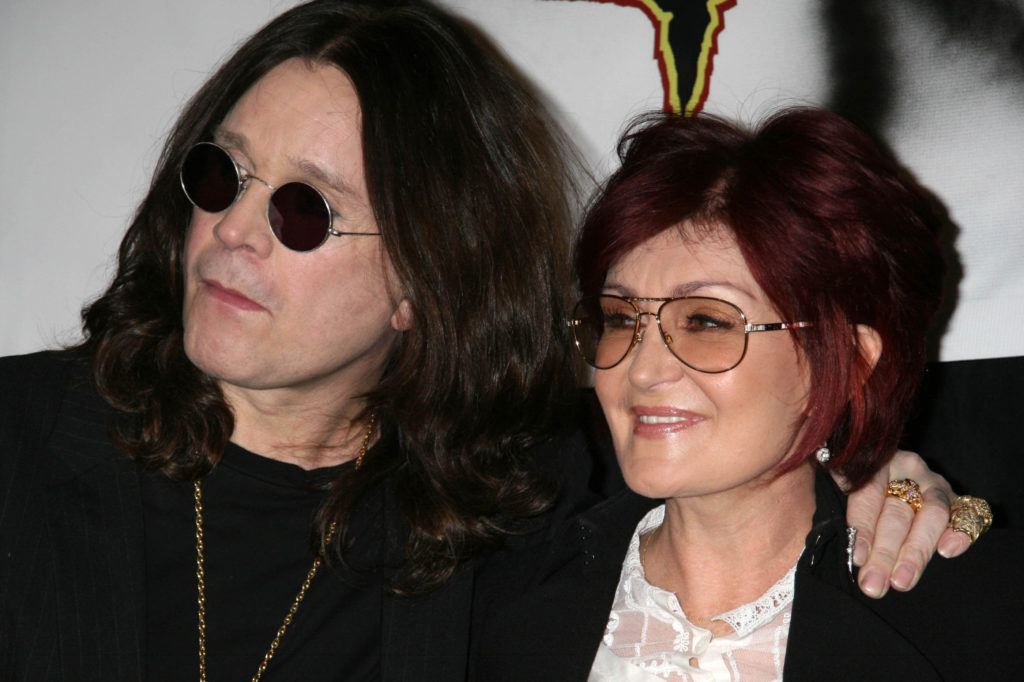
The first time I heard about OZY Media and OZY Fest, I actually thought it was the latest concoction from Ozzie and Sharon Osbourne. After all, that rock n’ roll power couple first put a version of their lives in front of millions of us with their hit show, The Osbournes, on MTV. The Kardashians would come later.
But alas, OZY Media was the product of a much smarter and bigger thinking hype artist, Carlos Watson. As a long-time cable TV host and anchor, Watson’s dream was to assemble a media empire aimed at Millennials, and financed by celebrities and financial institutions that bought into his pop culture vision.
Investors included the wife of the late Steve Jobs, Laurene Powell Jobs, as well as Milwaukee Bucks’ co-owner Marc Lasry. They were early investors, followed by a gaggle of big money names, institutions, and stars. It was estimated OZY Media and its assorted enterprises raised some $80 million since the company’s inception in 2013.
There were news channels, television, and of course, a physical gathering, branded OZY Fest.

Watson, an alum of MSNBC and CNN, had deals with CNBC, as well as commentator, Katty Kay and Alex Rodriquez. OZY and iHeartMedia announced a multiyear creative partnership back in 2018. NPR put Watson on their board, a position he resigned last Friday. OZY Media’s growth strategy was pinned on leveraging the biggest and hottest names to attract even more influential stars and brands, a sort of media celebrity Ponzi scheme.
Seemingly, everyone wanted in on the hype. That is, until the excrement hit the fan last week. The New York Times published a scathing expose alleging hyped audience numbers, even including an OZY exec impersonating a YouTube spokesperson on an investor call with Goldman Sachs. In a shady effort to maintain their crumbling veneer of success, Watson and his partner, Samir Rao, were in the process of trying to extract another $40 million from the renowned investment firm. That’s when the OZY Media myth began to unravel.

Following the Times’ story reported by Ben Smith and Katie Robinson, OZY hastily shut it all down last Friday, although its website (www.ozy.com) remains “up.” The company’s motto, “Now and Next,” now has a hollow ring against the carnage of multi-million dollar financial losses and hype.
On CNN’s Reliable Sources yesterday, host Brian Stelter interviewed Smith, and asked which company would be the next digital media startup to collapse under its own hype.
It’s a good question, because as financially diligent as venture capital and angel investing firms purport to be, millions often flow based on gut, intuition, and the reputation of a start-up’s founders. Whether it’s Bernie Madoff, Elizabeth Holmes (Theranos), or Carlos Watson, there’s no shortage of flimflam.
Podcasting companies are now enjoying the halo effect of hype. While download metrics are insufficient and vary from source to source, that hasn’t stopped sponsors and other investors from going all-in.
Satellite radio has long benefitted from a lack of usage transparency. And back in the early years, some alleged Sirius occasionally inflated “subscriber” numbers by adding in unsold cars sitting on dealership lots, none of which are tuned into Howard 100, Yacht Rock Radio, or the ’60s on 6.
Broadcast radio operators have long groused about the ease with which Internet startups had not only raised gobs of cash, but also put up gargantuan losses year after year. Investors are seemingly tolerant of the red ink with these fledgling companies – they even expect it. With traditional media, there’s a much higher bar of performance, not to mention a near total lack of government oversight and regulation.
As we have come to find out – with the Internet wave of the late 1990s, and in recent years – a cool name, an open office space with free beer and games, and celebrity influencers do not a profitable company make. If anything, OZY turned out to be a house of cards, as my radio friend and mentor, Norm Feuer, often referred to brands that were “all hat and no cattle.”
profitable company make. If anything, OZY turned out to be a house of cards, as my radio friend and mentor, Norm Feuer, often referred to brands that were “all hat and no cattle.”
Surely, Caroline Beasley, David Field, Ed Christian and other leaders of radio centric corporations are operating on completely different financial expectations when doing their investor calls. Their collective frustration with the financial double-standard is understandable.
And then there’s the matter of what you get for your media investment when it comes to marketing. Every media outlet, from the Yellow Pages to OZY Media add a certain flourish to their numbers. Radio broadcasters have also been known to inflate the value of media plans or post-buy analyses when they value mentions at premium prices or provide heady estimates of crowd sizes for station events.
But when you buy radio, you know what you’re getting. Thanks to Nielsen data – numbers that are much-maligned but that paint a reasonably accurate picture of the radio marketplace – it’s relatively easy for advertisers to account for their money.
Radio may not be trendy, it may not be fashionable, and it most certainly is not cutting-edge. But you know where you stand. If a station has a cume rating of 15% or an AQH of 12,000 during morning drive, you can take these numbers to the bank.
Contrast that with the ambiguity that comes with digital and social media, especially surrounding ad placement and the marketing environment. Do your ads run next to hate speech and other undesirable content? Who do you call when you’re unhappy with your campaign and its results?
Broadcast radio is far from perfect, but what you see – or in this case, hear – is what you get. And given the environment, that’s not a bad deal.
In short, where’s the accountability, a word we hear bandied about these days.
There may be less of it than ever.
Oddly enough, Carlos Watson and the Osbournes had a skirmish some time back over the OZY name. Apparently, Watson had claimed Ozzy and Sharon were early investors, after a legal showdown about the brand took place. Sharon told CNBC last week that never happened.
investors, after a legal showdown about the brand took place. Sharon told CNBC last week that never happened.
And in summing up her take on Watson, Sharon Osbourne left nothing to interpretation:
“This guy is the biggest shyster I have ever seen in my life.”
In this case the rock stars might have done more due diligence than the investor community.
THIS JUST IN: Apparently, OZY is not dead yet. Carlos Watson went on CNBC this morning, saying the company was coming back. Did the board pull the plug too quickly. Does OZY have another life? And does anyone care? The story is here.
- Radio’s Dilemma: Trump Or Get Trumped - March 13, 2025
- What About Bob? - March 12, 2025
- Inside “3 Minutes” – An Exclusive Interview With Nielsen’s Rich Tunkel - March 11, 2025




By the way, how is Clubhouse doing these days?
Radio being a mature industry, Fred, your observation is right on the money. But let’s acknowledge that the Nielsen numbers have become reliable only in recent years, with the advent of PPM. In the bad old days when those numbers were founded on listener diaries, it was a stretch to call them reliable and (my opinion) plenty of music radio stations whose listeners were less diligent than those of the blowtorch talkers suffered, even failed. I’m glad those days are behind us.
It’s funny, John. I think the ratings methodology you have at the moment is the one you hate most. There are a lot of radio folks who would talk your ear off about PPM and it weaknesses. But over pencils and a paper diary – no contest. Thanks for commenting.
“…media celebrity Ponzi scheme…” is the best quote of the week…maybe the month! This story about the rise and fall of Ozy manifests that belief drives behavior. These investors BELIEVED the song-n-dance and failed to do adequate due dilly Fred. And as the pandemic has proven, once someone believes anything, very little will change their minds. How does that apply to what we do every day…? Just a thought…
Jackson, glad you enjoyed it. And in case you missed the update, Carlos is threatening to resurrect OZY. Yikes!
It may be pushing 30 years old, but “The 22 Immutable Laws of Marketing,” still always prove true.
Ozy lived and died by “The Law of Hype. The situation is often the opposite of the way the it appears in the press.” The second paragraph reads: “ When things are going well, a company doesn’t need the hype. When you need the hype, it usually means you’re in trouble.”
Ozy Media was both hyped and in trouble from the start. Others will follow.
You’re right – Ries & Trout 101. When you look at OZY’s mission, there was a lot to like. But misrepresenting that vision to investors, sponsors, the press, and users is virtually a guarantee you’ll get caught. And I agree this is likely not a standalone, although OZY may have been more brazen. Thanks for commenting, Andy.